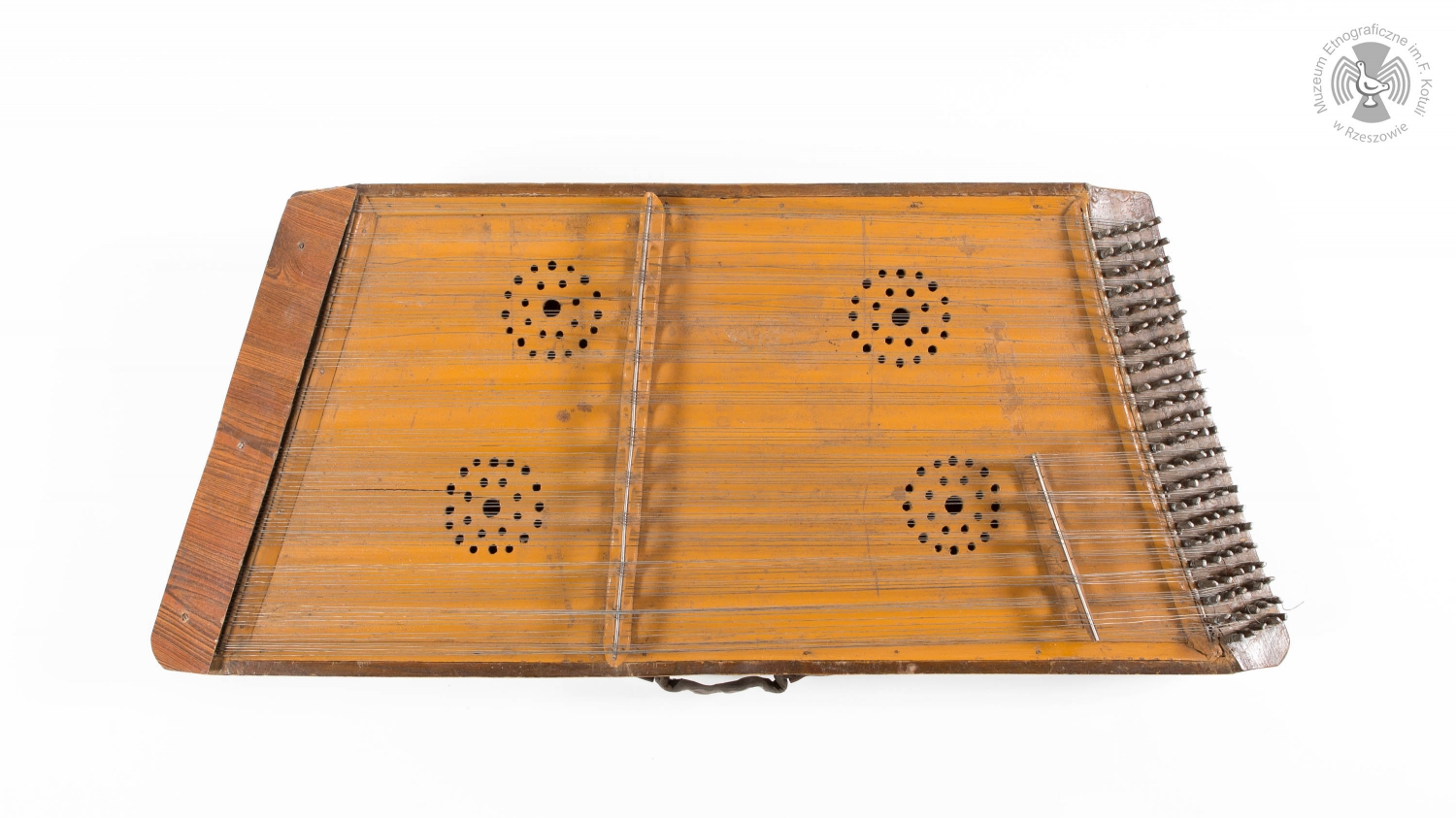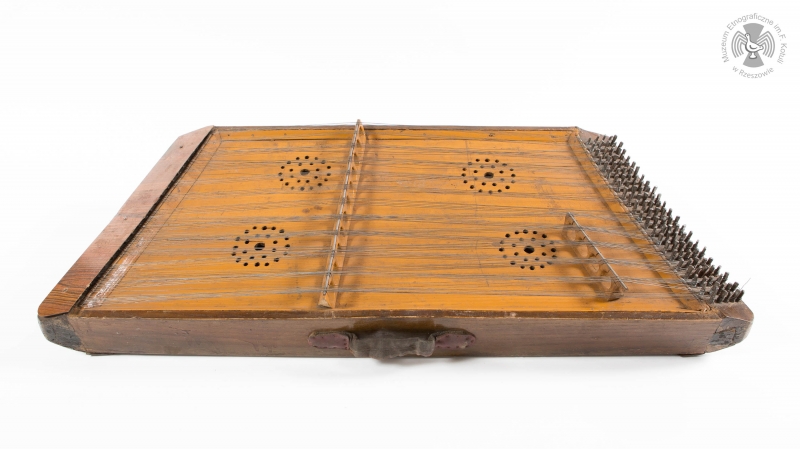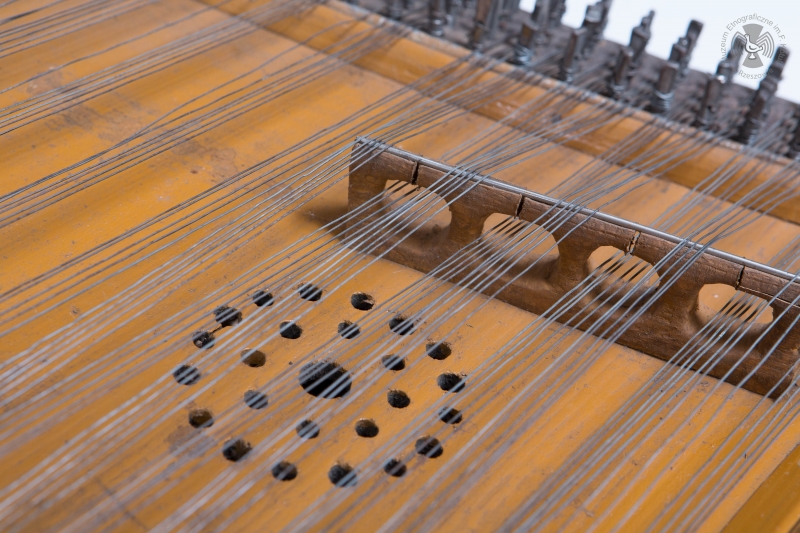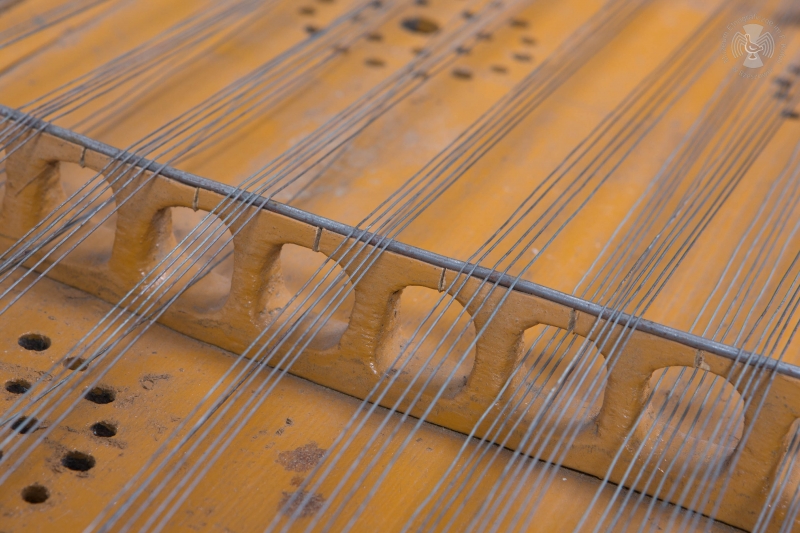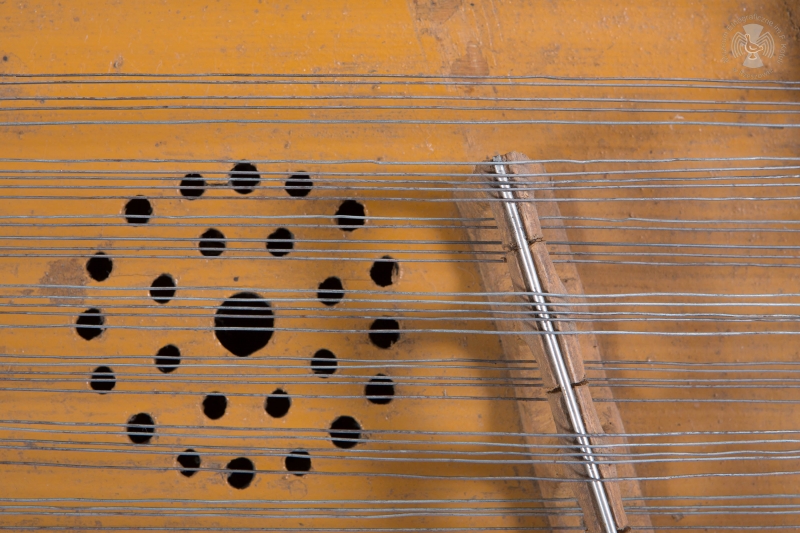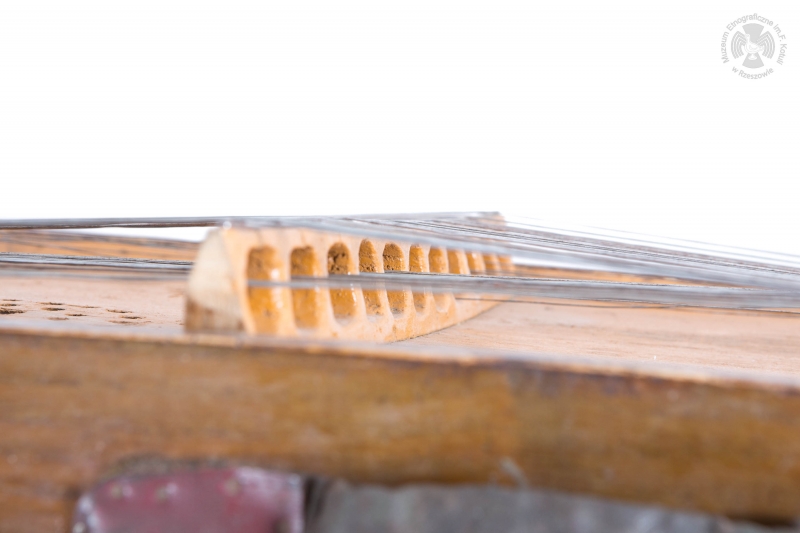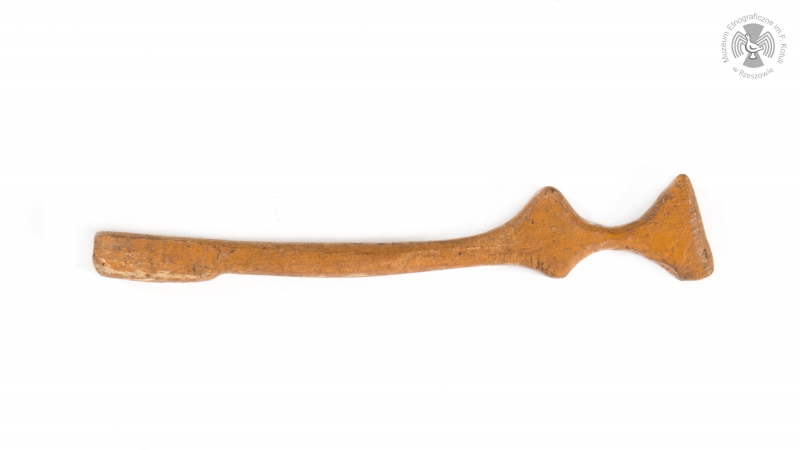dulcimer
Excerpt from the film Siła tradycji [The Power of Tradition], produced as part of the project "Muzyczny folklor Podkarpacia - badania terenowe" [The Musical Folklore of Subcarpathia - Field Studies], Franciszek Kotula Ethnographic Museum in Rzeszów, 2014
dulcimer
Classification: 3 Chordophones / 31 Simple chordophones or zithers / 314 Board zithers / 314.1 True board zithers / 314.12 With resonator / 314.122 With resonator box (box zither) / 314.122-4 True board zithers with resonator box (box zither) sounded by hammers or beatersMaker: Unknown
Date: early 20th century
Village / Town: Hyżne area
Region: Subcarpathia
Country: Poland
Owner: Franciszek Kotula Ethnographic Museum in Rzeszów
Inventory number: MRE 8146
Description: body in a trapezoid shape with unmoulded sides; respective elements are connected using nails and (partly) with rabbets; four resonance holes; 22 string courses (5 strings in each course, stretched between metal hitches and pegs (for tuning), supported on two bridges, each with a metal bar attached on top (the right bridge is shorter and uphold only 5 string courses); only the lowest melody strings are stretched interchangeably with bass strings; melodic strings divided by bridges in a 2:3 ratio, due to which their left sections are pitched a fifth higher than their right sections; undivided bass strings; string hitches are shielded with a wooden cover; two metal hitches on the sides of the instrument for attaching a strap which allowed the musician to suspend the dulcimer on their neck while playing in a standing position; bottom plate equipped with three bolted legs, each 500 mm-long
Decoration: front plate and (parts of) sides coated with dark yellow oil paint; four resonance holes filled with wooden plates with holes in the shape of two concentric circles with a larger hole in the middle
Measurements: 945 x 725 x 405 x 84 mm
Materials: wood, metal
Sound compass, tuning: variable, usually the lowest tone G – d, scale: from two (sometimes incomplete) to over four octaves
Performance practice: formerly an instrument of Jewish and Romany musicians, later folk musicians; it was played solo or in bands, particularly in the Vilnius area, Rzeszów area, and in Subcarpathia, where the dulcimer became the musical hallmark of the region after World War II; dulcimers from the eastern part of Lesser Poland are usually bigger and louder than those from the Vilnius area
Catalog card by: Jolanta Pękacz / Zbigniew J. Przerembski
<< Back

